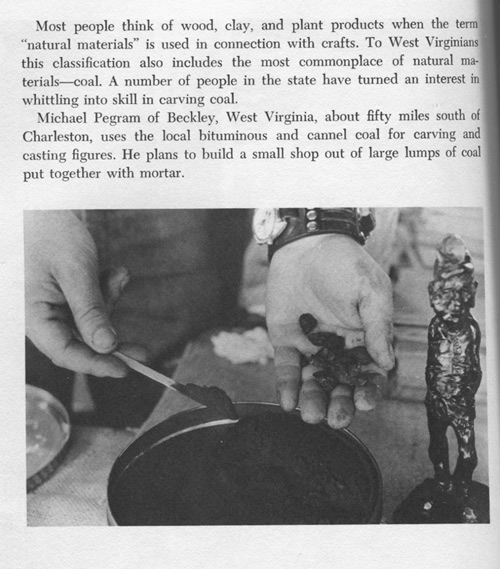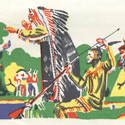In 1974, I'll bet there wasn't a middle or high school in America where kids weren't making Deliverance jokes to one another. While I doubt the damage that film did to our cultural perception of Appalachian people will ever be undone by books or documentaries, I've long appreciated the work done by Appalshop and Foxfire Magazine to preserve and paint a more complex understanding of Appalachian culture. I recently found this little 1974 book, Mountain People, Mountain Crafts taken out of circulation of a middle school library and on the shelf at the local used book store. Once I read it from cover to cover I realized what a treasure I'd found.
Elinor Lander Horwitz, a Smith-educated Jew from Connecticut traveled with her two sons (Joshua and Anthony, who would win the Pulitzer prize himself in 1995) to rural Appalachia to document the crafts and craftspeople of the region. Elinor told the stories they found there and her two teenaged boys documented everything with stunning photographs. The warmth and grace they met among the isolated Appalachian craftspeople shines through the text, which is often exquisitely written. Like most great books written for a youthful audience it doesn't pander. I love this book, and will share just a portion of it here.
The book focuses on a variety of crafts, but first portrays the artisans who make the fiddles, dulcimers, and banjos so important to Appalachian music.
How great is Kyle Creed of Galax, Virginia? Grocery Store owner, construction foreman, and highly-respected banjo-maker and player who has cut four records "in recent years." Plus, he wears his hardhat while posing for pictures.
The Horwitz family then turns its attention to doll and toymakers. The descriptions are so detailed kids reading the book could almost replicate the crafts themselves.
The next chapter focuses on woodworkers. This guy is awesome:
Horwitz usually goes beyond the crafts and describes the isolated lives of the men and women who make them.
This guy's story is particularly touching:

The book then focuses on "Snake Canes, Wooden and Corn Husk Flowers, and Coal Craft." This guy has figured out a way to make souvenirs out of the plentiful coal:
The focus shifts to domestic crafts, including quilts and loom work.
I love this young guy. He's like, "We didn't just learn how to do this. We've been making a living at pottery for seven generations."
What a great family trip. What great stories and documentation of a rich culture that, has 1974, become more and more threatened by the Wal-Martification of America. I'm glad I have this book for my kids.






























